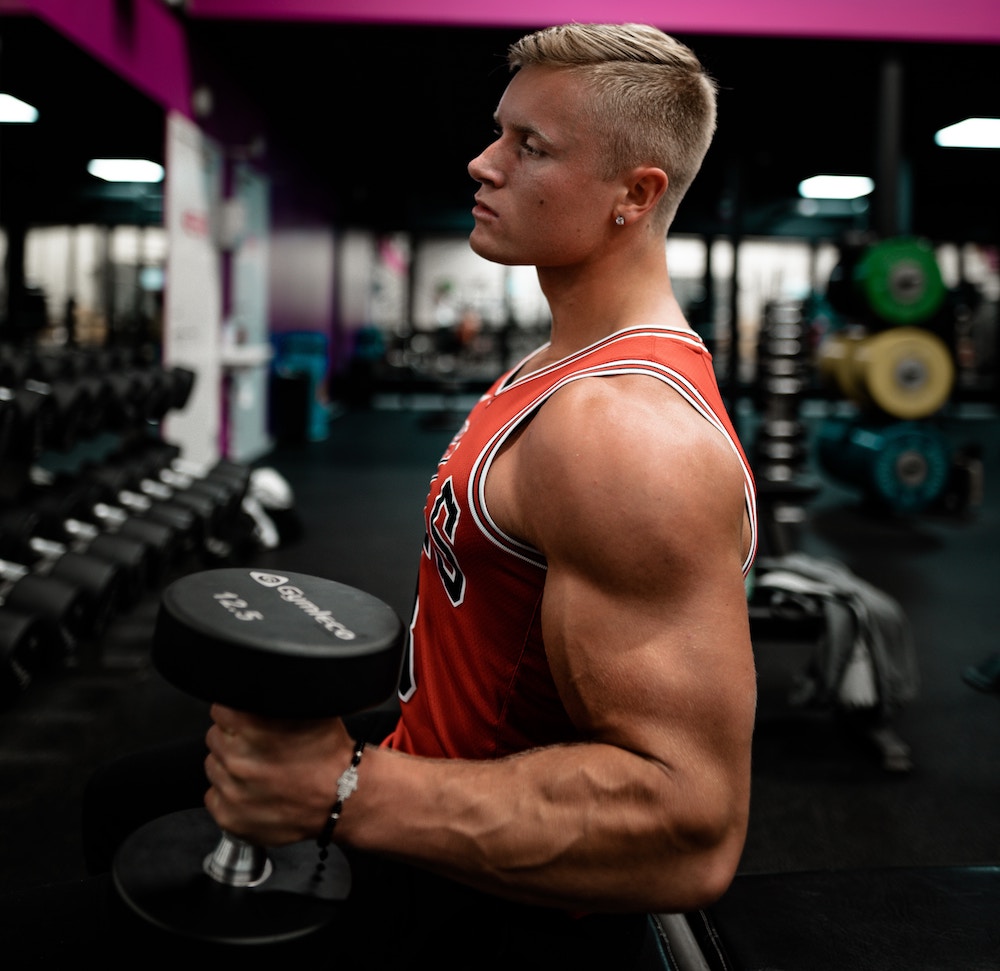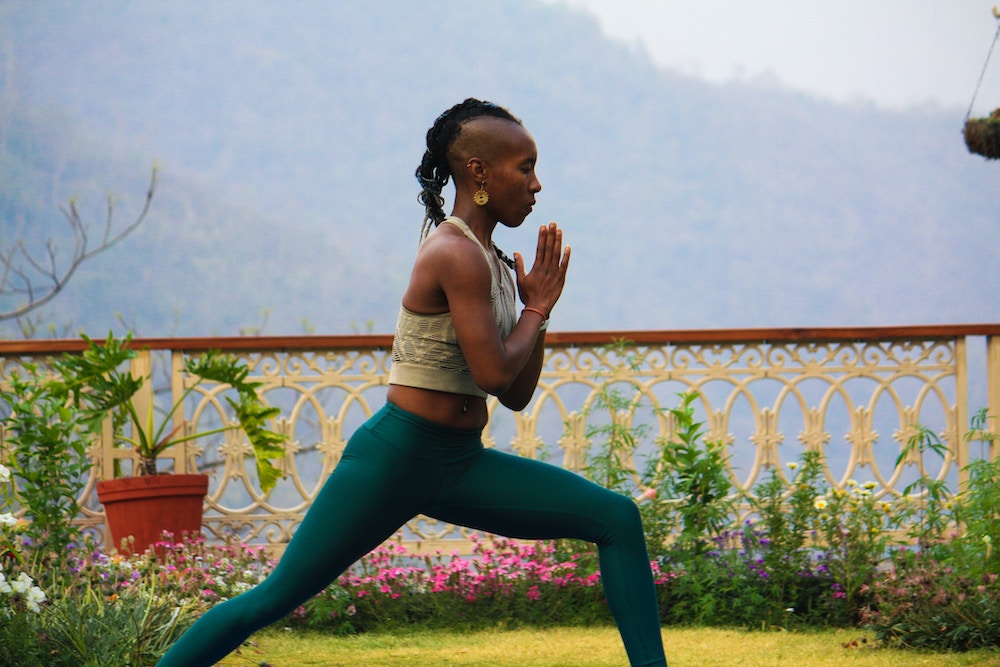The Pierced Athlete: How to Enjoy Your Piercing While Staying Fit September 27, 2021 – Posted in: Piercing Advice – Tags: exercising with a new piercing, go to the gym with a new piercing, piercing aftercare, piercing and sweat
Highlights:
- Working out with a new piercing is possible, but you have to make special considerations.
- Make sure that you keep the piercing clean and protect it from snags and snares.
- After you work out, be sure to clean it properly with a piercing aftercare saline solution
So, you’re an athlete, an outdoorsy type, an adventurer, someone who likes to stay active in life.
And, you want to get pierced.
Although it’s rare that a piercing will ruin your active lifestyle, there are some things that you need to keep in mind as you participate in your activity. (The last thing you want is to have your helix hoop get caught in your baseball/softball helmet when it flies off as you’re stealing second base.)
Here are some things that you need to keep in mind and tips on how to minimize snags, tears, and other complications when you exercise with a new piercing.

Photo by John Fornander on Unsplash
Make sure to keep it clean as it heals, especially at the gym
Keeping your healing piercing clean is a no-brainer. Any piercer will tell you that you need to clean your piercing 2 – 3 times daily with a piercing aftercare solution. When you’re more active, you have to be extra mindful of this, especially when you’re at the gym.
While it is more than possible to continue your workout regimen as your piercing heals, there are a few hazards at the gym to avoid.
1. Keep your piercing away from gym equipment
Even if you’re supposed to spray down your equipment after you use it, be honest, do you really wipe it down all that well? There’s going to be a lot of sweat, debris, and bacteria left on the equipment from hours of use. Keep your healing piercing off of the equipment, and don’t touch your jewelry until you’ve had a chance to wash your hands. It’s also a good idea to save one of your 2 – 3 cleaning times for immediately after you work out. Or, take a shower as soon as possible.
2. Avoid workouts that place pressure on the jewelry
Depending on the workout and the placement of the jewelry, you need to avoid certain exercises. If you have a fresh navel piercing, for example, stay away from sit-ups or crunches until your piercing has fully healed. Keep in mind that some piercings take a significant time to heal, so if it messes with your workout routine, then consider getting pierced in a different area.
3. Thoroughly dry your sweat post-workout
While sweat itself doesn’t harm a healing piercing, touching your piercing while wiping away sweat might. Remain mindful of your piercing as you work out, and refrain from wiping away sweat if it’s in the area of your piercing. When it becomes uncomfortable, you can dab away the sweat with a clean paper towel. Keep those sweat rags away; they can easily catch on the jewelry, and they harbor dirt and debris that’s best kept away from the piercing. It’s also important to note that dampness can cause piercing complications, like piercing bumps. Once you’re done working out, be sure to fully dry your piercing.
Exercising with a piercing isn’t a problem for your workout as long as you stay mindful. But, it is something to be aware of.
Choose proper jewelry that won’t snag
As your piercing heals, you’ll be limited to the types of jewelry that are safe for a healing piercing, and often it will have to be a little larger to accommodate any swelling. As it heals, remain mindful of your piercing, especially when you’re active.
Once your piercing heals, you’ll have a larger selection of jewelry to choose from. It’s a good idea to find jewelry that’s safe to wear while taking part in activities.
Jewelry that won’t easily snag is a must. Find some smaller pieces that will sit flush with the skin. If your piercing takes studs, choose flat back options with a small charm or bead. If it takes a hoop, circular barbell, or curved barbell, choose the smallest piece possible (without pressing against the piercing holes). Consider a small circular barbell or a seamless hoop that sits close to the skin. When in doubt, talk to your piercer about it.
Stay away from organic materials, like wood or glass, because they are more likely to break, which could injure you.

Photo by rishikesh yogpeeth on Unsplash
Carefully consider the piercing that you’re getting
You need to seriously think about the piercing that you want and whether its location and healing time will affect your active lifestyle.
As a piercing heals, it’s important that the jewelry stays as still as possible. So, if you get a navel piercing, and you have the goal of doing 50 sit-ups a day, it’s probably not going to work out.
If you can put your activity on pause for the healing period, then you should be fine. However, depending on the location of the piercing and how well you take care of it, piercings can take anywhere from 6 weeks to one year or more to heal. This can pose an issue for your training.
If you’re unsure, consult a piercer, and talk to them about your training, activities, and anything that might impede healing for the piercing that you want to get, and they’ll let you know whether or not the piercing is a good idea for you.
A note for swimmers: You cannot swim while your piercing is healing. There are some piercing types, like the lobe and the septum, that can take as little as 6 weeks to heal (but it could take longer), so if you can stop training for that long, those piercing types could be for you. Otherwise, you probably shouldn’t get pierced.
Protect the piercing and jewelry as much as possible
Many people are tempted to bandage new piercings with an adhesive to protect them as they’re healing, but this is a bad idea; adhesive bandages disallow the piercing to breathe, and it could cause some issues.
Instead, if your new piercing is in an area that poses a snag risk, you can wear cotton garments that cover the jewelry (as long as they’re not too tight).
For example, if you are healing nipple piercings, you can wear a cotton tank top or tee shirt that’s tight enough to secure the jewelry without placing pressure or a cotton bra to keep the piercing safe as you play.
While being active in itself won’t keep you from being pierced, there are unique considerations that you need to make. For any activity, the most important things to remember are that the jewelry needs to move as little as possible, there shouldn’t be too much pressure on the jewelry, and you should shower and/or clean the jewelry with a piercing aftercare saline solution immediately after your activity. If you pay attention to those things, then you should be able to enjoy your new piercing just fine.









1 Comment
vroxopoios438 March 26, 2022 - 04:20
Hello!
About the swimming i want to ask something,
does swimming in the open sea cause problems in healing?
thank you for your time!
Regards Thanasis